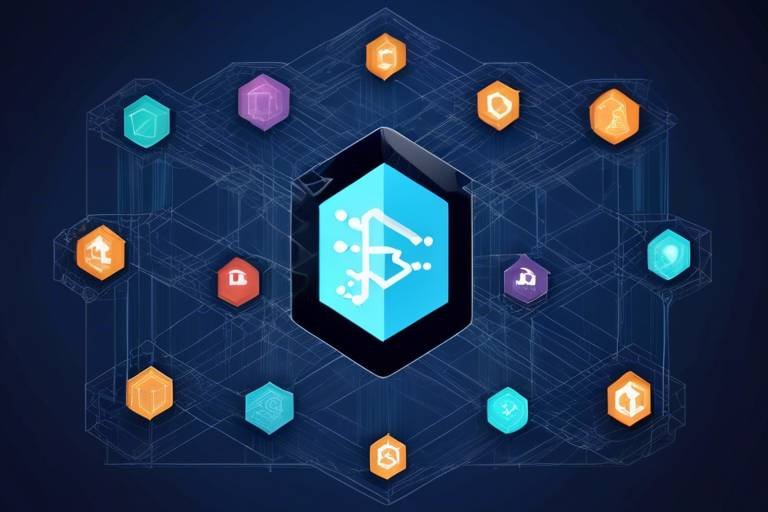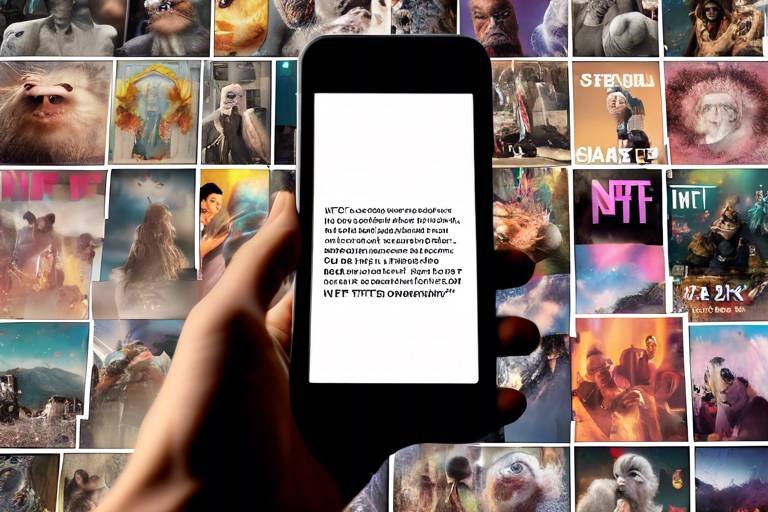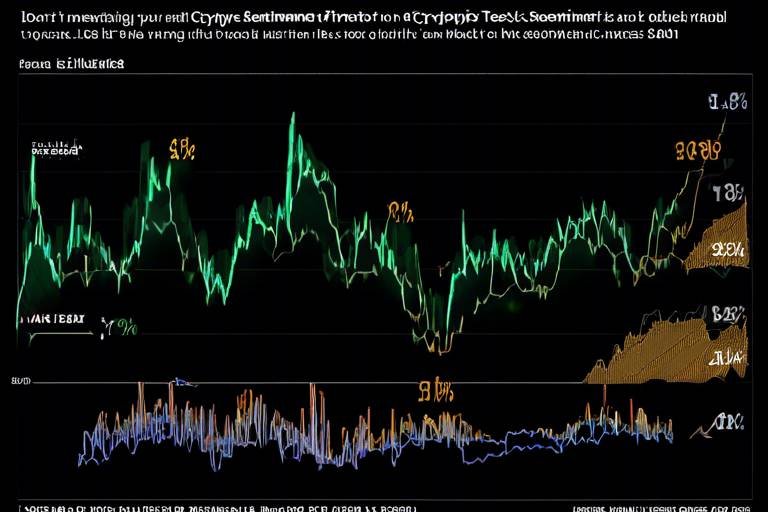The Role of Blockchain in Protecting Intellectual Property
In today's rapidly evolving digital landscape, the protection of intellectual property (IP) has become more critical than ever. With the rise of the internet, creators are constantly facing challenges like piracy, counterfeiting, and ownership disputes. Enter blockchain technology, a revolutionary tool that offers innovative solutions to these pressing issues. Imagine a world where artists, inventors, and creators can secure their work with unparalleled confidence. Blockchain not only enhances the protection of intellectual property rights but also fosters a sense of trust among creators and consumers alike.
So, what exactly is blockchain, and how does it work its magic in the IP realm? At its core, blockchain is a decentralized digital ledger that records transactions across numerous computers in a secure and transparent manner. This means that once a transaction is recorded, it becomes nearly impossible to alter or delete, ensuring that the ownership and provenance of intellectual property remain intact. With blockchain, the days of worrying about unauthorized use of your creations could be on their way out!
One of the most remarkable aspects of blockchain is its decentralization. Unlike traditional systems where a single entity controls the data, blockchain spreads this control across multiple nodes, significantly reducing the risk of data tampering or loss. This decentralization not only enhances security but also empowers creators by giving them direct control over their intellectual property. Imagine being able to track every use of your work without relying on intermediaries—this is the promise of blockchain.
Moreover, the immutability of blockchain records serves as a robust safeguard for intellectual property. Once information is entered into the blockchain, it cannot be changed or erased. This feature is crucial for maintaining the integrity of ownership claims and establishing a clear chain of custody for creative works. In a world where disputes over ownership can lead to costly legal battles, blockchain provides a reliable and transparent solution.
Transparency is another significant advantage of blockchain technology. Every transaction recorded on the blockchain is visible to all parties involved, fostering a culture of trust. This transparency can drastically reduce the likelihood of disputes over intellectual property rights. When creators and consumers can easily verify ownership and usage rights, it paves the way for smoother transactions and collaborations.
As we delve deeper into the applications of blockchain in protecting intellectual property, it becomes evident that its versatility spans various industries. From copyright registration to patent management and trademark protection, blockchain is transforming how we approach IP rights. Each application showcases the technology's potential to streamline processes and enhance security, making it an indispensable tool for creators in the digital age.
In conclusion, the role of blockchain in protecting intellectual property is not just a trend; it's a fundamental shift in how we secure and manage creative works. By leveraging the principles of decentralization, immutability, and transparency, blockchain technology empowers creators to take control of their intellectual property like never before. As we continue to explore its applications and real-world case studies, the future looks promising for artists, inventors, and anyone who values their creative contributions.
- What is blockchain technology? Blockchain is a decentralized digital ledger that records transactions securely across multiple computers.
- How does blockchain protect intellectual property? It enhances security through decentralization, ensures immutability of records, and promotes transparency in transactions.
- Can blockchain eliminate piracy and counterfeiting? While it may not eliminate these issues entirely, blockchain significantly reduces the risk and provides tools for better tracking and enforcement.
- What industries are using blockchain for IP protection? Various industries, including music, art, and technology, are leveraging blockchain to secure their intellectual property rights.

Understanding Intellectual Property
Intellectual property (IP) is a term that encompasses a wide array of creations that originate from the human mind. It includes not just inventions, but also artistic works, designs, symbols, names, and images. In a world where ideas are the currency of innovation, understanding the nuances of intellectual property is essential for anyone looking to protect their creative outputs. Think of IP as the invisible shield that guards your unique ideas and creations from being exploited without your permission.
There are several types of intellectual property, each serving a distinct purpose. Here are the main categories:
- Patents: These protect inventions and processes for a specified period, giving the inventor exclusive rights to use, sell, or license their creation.
- Copyrights: These safeguard original works of authorship, such as books, music, and films, preventing others from using them without permission.
- Trademarks: These protect symbols, names, and slogans used to identify goods or services, ensuring that consumers can distinguish between different brands.
- Trade Secrets: These encompass confidential business information that provides a competitive edge, such as formulas, practices, and processes.
Understanding these categories is crucial because each type of intellectual property requires different strategies for protection. For instance, while patents must be registered with a governmental body, copyrights exist automatically upon the creation of a work. This is where the role of blockchain technology comes into play, providing innovative solutions to enhance the protection of these valuable assets.
In the digital age, the threats to intellectual property are ever-present. Piracy, counterfeiting, and unauthorized usage can undermine the value of creative works. This is why a solid grasp of intellectual property rights is not just beneficial, but necessary for creators, inventors, and businesses alike. By leveraging blockchain technology, we can create a more secure environment where the rights of intellectual property holders are respected and enforced.
In summary, intellectual property is not merely a legal concept; it is a vital part of our creative economy. As we delve deeper into how blockchain can bolster IP protection, keep in mind the various forms it takes and the importance of safeguarding these intangible assets.
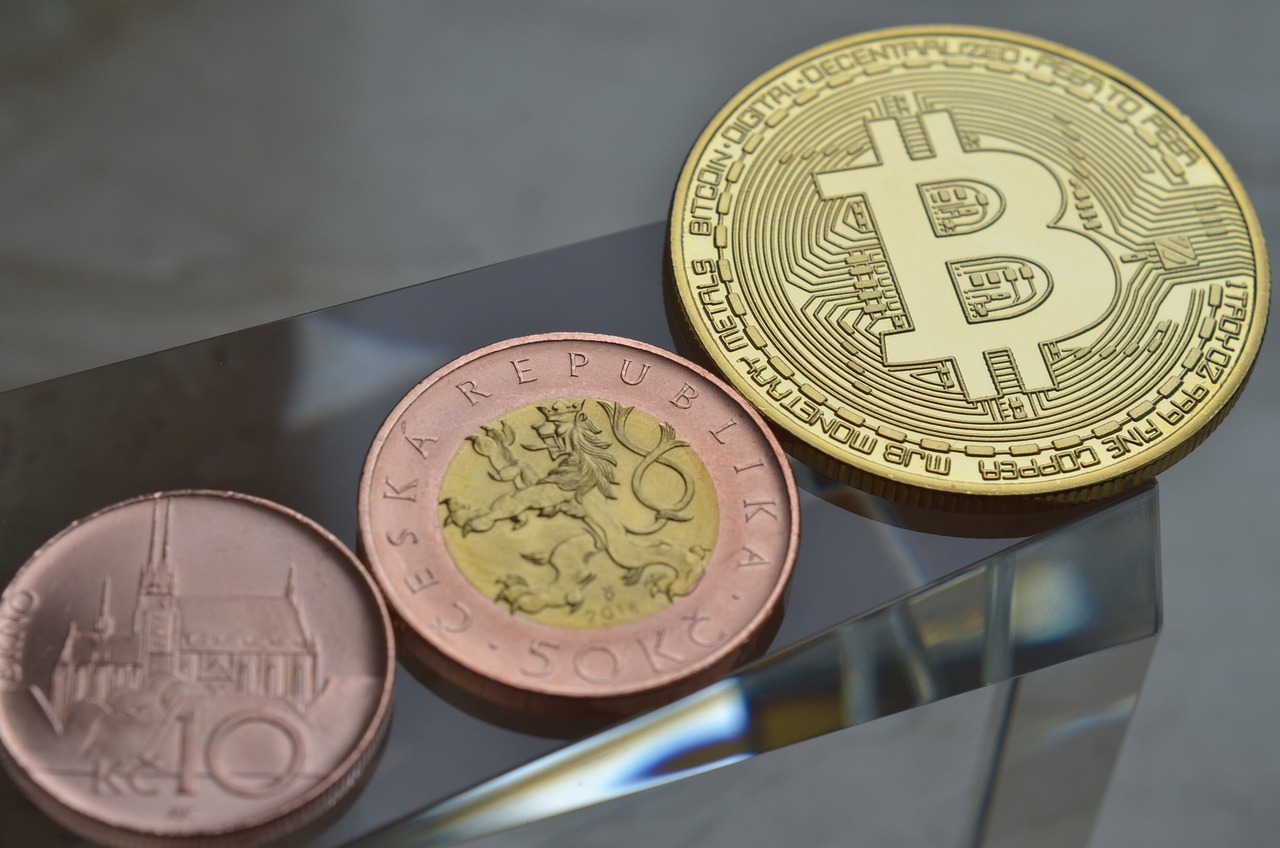
Blockchain Technology Explained
Blockchain technology is often described as a decentralized digital ledger that records transactions across multiple computers in a secure and transparent manner. At its core, blockchain operates on a network of computers (or nodes) that collaborate to maintain a continuously updated and unalterable record of transactions. This means that instead of having a single point of control, the power is distributed across all participants, significantly reducing the risk of fraud and manipulation. Imagine a public library where everyone can add books, but once a book is placed on the shelf, it cannot be removed or altered without everyone knowing. That's the essence of how blockchain functions.
One of the most compelling aspects of blockchain is its transparency. Every transaction is recorded in a way that is visible to all network participants, which fosters a sense of trust among users. This transparency is crucial when it comes to intellectual property rights, as it allows creators to prove ownership and track the usage of their works without relying on a centralized authority. Furthermore, the immutability of blockchain records means that once something is logged, it cannot be changed or deleted. This characteristic is essential for maintaining the integrity of intellectual property ownership, as it provides an indisputable record of who created what and when.
In addition to transparency and immutability, blockchain also offers a high level of security. Each transaction is encrypted and linked to the previous one, creating a chain of blocks that is incredibly difficult to tamper with. This cryptographic security ensures that intellectual property rights are protected from unauthorized access and infringement. In a world where digital piracy and counterfeiting are rampant, the ability to secure creative works is more important than ever.
To summarize, blockchain technology is a revolutionary tool that can significantly enhance the protection of intellectual property through:
- Decentralization: Reduces the risk of data tampering.
- Immutability: Ensures that records cannot be altered once entered.
- Transparency: Allows for verification of transactions by all parties.
- Security: Protects against unauthorized access and infringement.
As we dive deeper into how blockchain can be applied in various sectors, it becomes clear that its potential for safeguarding intellectual property is vast and varied. From copyright registration to patent management, the implications of this technology are profound, setting the stage for a new era of creativity and innovation.

Decentralization and Security
When we talk about decentralization in blockchain technology, we're diving into a world where control is distributed across a network rather than being held by a single entity. Imagine a library where every book is not just stored in one location but is instead replicated across countless branches. This means that if one branch closes, the books are still safe and sound elsewhere. In the context of intellectual property (IP), this decentralization minimizes the risk of data tampering or loss, making it incredibly difficult for malicious actors to alter or steal valuable creative works.
The security features of blockchain further enhance this protection. Each transaction, whether it's a copyright registration or a patent filing, is encrypted and linked to the previous transaction, creating a secure chain of information. This means that any attempt to change a record would require altering every subsequent block in the chain, which is virtually impossible in a well-distributed network. Think of it as trying to change the outcome of a game that's already been played in front of thousands of fans; everyone has seen it, and it’s recorded in multiple places.
Moreover, the security of blockchain is bolstered by its consensus mechanisms, which ensure that all participants in the network agree on the validity of transactions before they are added to the blockchain. This process not only secures the data but also fosters a sense of trust among users. In the realm of intellectual property, this means that creators can confidently share their work without the fear of it being misappropriated. The combination of decentralization and security creates a robust environment for protecting IP rights, empowering creators to maintain control over their innovations and artistic expressions.
To illustrate the importance of decentralization and security in blockchain, consider the following table:
| Feature | Benefit for Intellectual Property |
|---|---|
| Decentralization | Reduces risk of data loss and tampering; ensures availability of records. |
| Security | Encrypts transactions, making unauthorized access nearly impossible. |
| Consensus Mechanisms | Ensures all participants validate transactions, fostering trust. |
In summary, the decentralization and security offered by blockchain technology significantly enhance the protection of intellectual property. These features not only safeguard creative works but also empower creators by providing a trustworthy platform for managing their rights. As we continue to explore the intersection of technology and creativity, it becomes clear that blockchain is not just a trend; it's a necessary evolution in the way we protect our intellectual treasures.
- What is blockchain technology?
Blockchain is a decentralized digital ledger that securely records transactions across multiple computers. - How does blockchain protect intellectual property?
It provides a secure, immutable record of ownership and transactions, reducing the risk of piracy and counterfeiting. - What are the benefits of decentralization?
Decentralization minimizes risks associated with data loss and tampering while ensuring that records are widely available. - Can blockchain be used for all types of intellectual property?
Yes, blockchain can be applied to copyrights, patents, trademarks, and more, enhancing protection across various creative fields.
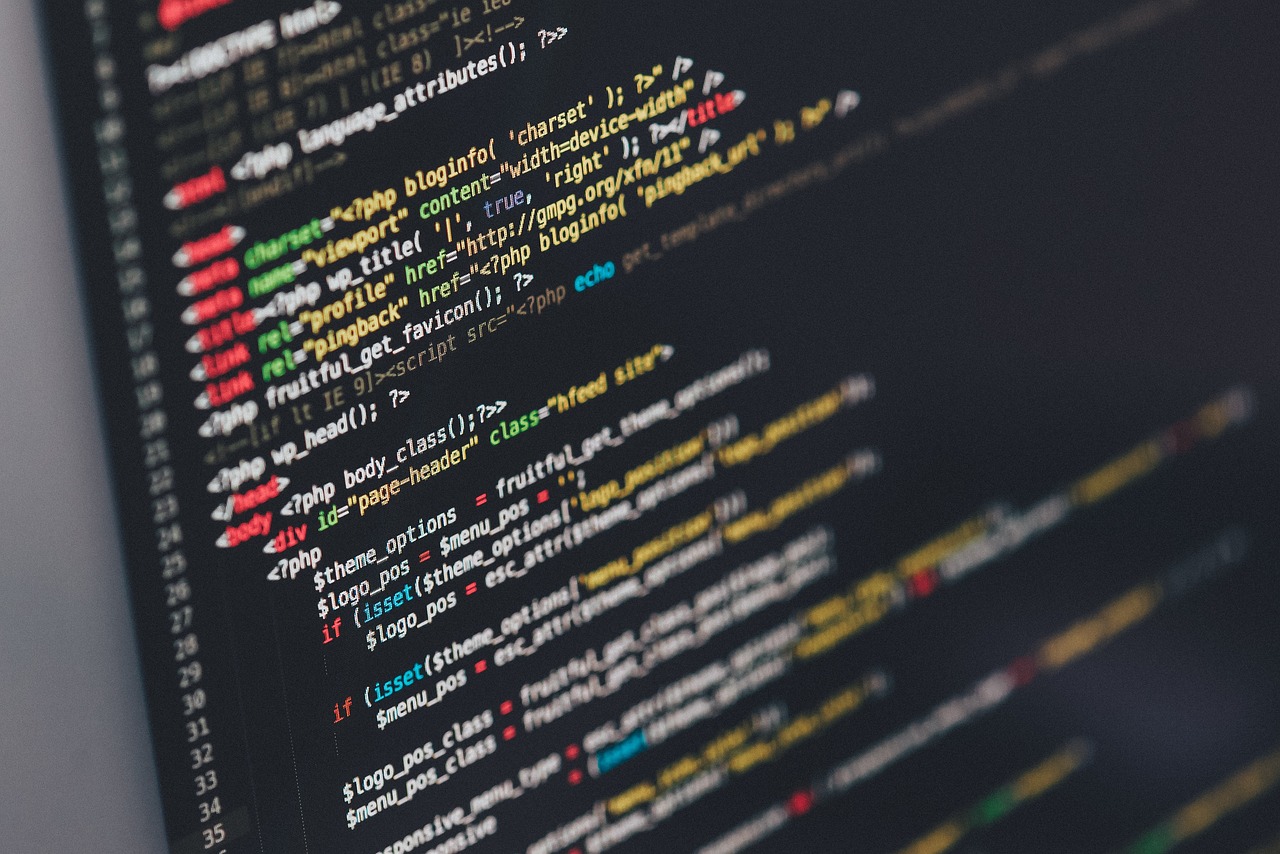
Immutability of Records
The concept of immutability is one of the most compelling features of blockchain technology, especially when it comes to protecting intellectual property. In simple terms, once a record is added to the blockchain, it cannot be changed or deleted. This characteristic is akin to cementing your creative work in stone; it becomes a permanent fixture that cannot be altered or erased. Imagine if every time you published a new book, you could ensure that no one could ever change the text without your permission. That’s the power of immutability!
This permanence is crucial for maintaining the integrity of intellectual property ownership, as it ensures that the original creator's rights are protected against any form of infringement or dispute. For instance, if an artist registers their artwork on a blockchain, the record of this registration is immutable. This means that if someone attempts to claim ownership of that artwork later on, the blockchain will provide irrefutable proof of the original creator.
Moreover, this immutability feature plays a vital role in establishing provenance—the history of ownership of a piece of intellectual property. By having a tamper-proof record of all transactions related to a specific creative work, stakeholders can easily trace back to the original creator. This is especially important in industries like art and music, where authenticity is paramount. Without a reliable way to verify ownership and authenticity, creators risk losing their rights and potential income.
To further illustrate the significance of immutability, consider the following points:
- Protection Against Fraud: The unchangeable nature of blockchain records helps to combat fraud by providing a clear and indisputable trail of ownership.
- Legal Clarity: In case of disputes, having immutable records can serve as legal evidence, simplifying the resolution process.
- Trust Building: Creators and consumers can trust that the information they see on the blockchain is accurate and untampered, fostering a healthier marketplace.
In summary, the immutability of records on the blockchain is not just a technical feature; it’s a game-changer for intellectual property protection. By ensuring that once something is recorded it cannot be altered, blockchain technology provides a robust framework for safeguarding the rights of creators. This empowers artists, inventors, and writers to share their work without the constant fear of theft or misrepresentation.

Transparency in Transactions
When we talk about , we're diving into one of the most exciting aspects of blockchain technology. Imagine a world where every transaction is recorded on a public ledger that anyone can access. This isn't just a dream; it's the reality that blockchain offers. With its transparent nature, blockchain ensures that all parties involved can verify transactions without needing a middleman. This is revolutionary, especially in a digital landscape often plagued by mistrust and disputes.
Consider the traditional methods of handling intellectual property rights. Often, creators have to rely on complex contracts and intermediaries to manage their works. This can lead to confusion, miscommunication, and even outright theft of ideas. With blockchain, however, every transaction—whether it's the sale of a song, a piece of art, or a patent—can be traced back to its origin. This means that the creator's rights are not only protected but also easily verifiable by anyone interested. It’s like having a superpower that allows you to see the entire history of an asset at a glance!
Furthermore, transparency fosters a sense of trust among creators, consumers, and investors. When everyone can see the same information, it reduces the chances of disputes arising from misunderstandings about ownership or rights. Imagine you're an artist who has just sold a piece of digital art. With blockchain, you can provide your buyers with a verifiable record of ownership, ensuring they know exactly what they’re getting. This not only enhances the value of the artwork but also builds a solid relationship between the artist and the buyer.
To illustrate this point further, let’s look at a simple comparison of traditional methods versus blockchain:
| Aspect | Traditional Methods | Blockchain |
|---|---|---|
| Verification | Requires intermediaries | Instant and public |
| Trust | Dependent on contracts | Built through transparency |
| Ownership Records | Often unclear | Immutable and clear |
In conclusion, the transparency that blockchain provides is not just a technical feature; it’s a fundamental shift in how we think about and manage intellectual property. By eliminating the fog of uncertainty that often surrounds ownership and rights, blockchain is paving the way for a more secure and trustworthy environment for creators and consumers alike. So, whether you're an artist, a musician, or an inventor, embracing this technology could be the key to safeguarding your creations in the digital age.
- What is blockchain technology? Blockchain is a decentralized digital ledger that securely records transactions across multiple computers.
- How does blockchain enhance intellectual property protection? By providing transparency, immutability, and security, blockchain helps verify ownership and reduce piracy.
- Can blockchain prevent counterfeiting? Yes, with transparent records, it becomes easier to trace the provenance of products, making it harder for counterfeit goods to enter the market.
- Is it expensive to implement blockchain for IP protection? While there may be initial costs, the long-term benefits of reduced piracy and better management of rights can outweigh these expenses.

Applications of Blockchain in IP Protection
Blockchain technology is not just a buzzword; it’s a revolutionary tool that is reshaping the landscape of intellectual property (IP) protection across various industries. As we dive into the applications of blockchain in IP protection, it’s important to understand that this technology provides innovative solutions to some of the most pressing issues faced by creators and businesses today. From copyright registration to trademark protection, blockchain offers a robust framework that addresses the complexities of IP management in the digital age.
One of the most significant applications of blockchain is in copyright registration. Traditionally, registering a copyright can be a cumbersome process, often involving lengthy paperwork and potential disputes over ownership. With blockchain, creators can register their works in a decentralized ledger, ensuring that their rights are recorded in a secure and immutable manner. This means that once a work is registered, it is timestamped and cannot be altered, providing undeniable proof of ownership. Imagine having a digital fingerprint of your creation that is permanently etched in a global network; that’s the power of blockchain.
Another crucial application is in patent management. The patent process can be notoriously complex and expensive, often leading to disputes over who invented what and when. Blockchain simplifies this by allowing inventors to file patents directly onto the blockchain. This not only streamlines the process but also creates a transparent record of the invention’s timeline. As a result, disputes can be resolved more efficiently, reducing the legal costs associated with patent litigation. It’s like having a personal assistant that keeps track of all your inventions and their timelines, ensuring that you never lose your rightful claim.
Furthermore, blockchain plays a vital role in trademark protection. Businesses invest significant resources in building their brand identity, and protecting that identity is paramount. Blockchain can help by providing a transparent registry of trademarks. This allows businesses to verify the ownership of a trademark and check for potential infringements easily. By leveraging blockchain, companies can mitigate the risks associated with counterfeit products and unauthorized use of their brand. It’s akin to having a digital watchdog that ensures your brand remains untarnished in a sea of competitors.
To illustrate the versatility of blockchain in IP protection, let’s consider a few key features:
| Application | Description | Benefits |
|---|---|---|
| Copyright Registration | Securely register creative works on a decentralized ledger. | Immutable proof of ownership, reduced disputes. |
| Patent Management | File and track patents directly on the blockchain. | Streamlined process, transparent timelines, reduced litigation. |
| Trademark Protection | Maintain a transparent registry of trademarks. | Easy verification, reduced risk of counterfeiting. |
In addition to these applications, blockchain can also facilitate royalty distribution. In industries like music and entertainment, artists often struggle to receive fair compensation for their work due to complex royalty agreements. By utilizing smart contracts on the blockchain, artists can automate royalty payments, ensuring they receive their share instantly and transparently. This not only empowers creators but also fosters a more equitable ecosystem where artists are compensated fairly for their contributions.
In conclusion, the applications of blockchain in IP protection are vast and varied. As this technology continues to evolve, we will likely see even more innovative solutions emerge, further enhancing the protection of intellectual property rights. The future looks promising, and for creators, businesses, and consumers alike, blockchain presents a beacon of hope in the ongoing battle against piracy, counterfeiting, and ownership disputes.
- What is blockchain technology? Blockchain is a decentralized digital ledger that securely records transactions across multiple computers.
- How does blockchain protect intellectual property? By providing a transparent, immutable record of ownership and facilitating streamlined processes for registration and management.
- Can blockchain help in royalty distribution? Yes, through smart contracts, blockchain can automate and ensure fair royalty payments to creators.
- Is blockchain only useful for digital assets? No, while it’s particularly beneficial for digital assets, blockchain can also protect physical intellectual property rights.

Case Studies of Blockchain in Action
In the ever-evolving landscape of intellectual property (IP) protection, blockchain technology has emerged as a game-changer. The real-world applications of this revolutionary technology are not just theoretical; they are being implemented across various industries to address the pressing challenges of piracy, counterfeiting, and ownership verification. Let's dive into some compelling case studies that showcase how blockchain is actively reshaping the way we protect intellectual property.
One of the most notable examples comes from the music and entertainment industry. Artists have long struggled with the rampant issues of piracy and unfair compensation. Blockchain technology offers a solution by providing a transparent and secure platform for royalty distribution. For instance, platforms like Myco utilize blockchain to ensure that every time a song is played, the artist receives their fair share of the revenue. This not only enhances trust between artists and their fans but also simplifies the complex web of rights management that often leads to disputes.
Another fascinating case study involves the art world, particularly with the rise of digital art and non-fungible tokens (NFTs). Traditional art ownership has always been fraught with challenges, such as proving provenance and authenticity. Blockchain technology addresses these issues head-on. By creating a digital certificate of authenticity that is recorded on the blockchain, artists can securely prove ownership and authenticity of their work. Platforms like Artory are pioneering this approach, allowing artists to mint their artworks as NFTs, thereby securing their intellectual property rights in a way that was previously unimaginable.
Moreover, the fashion industry is also leveraging blockchain to combat counterfeiting. Brands like Provenance are using blockchain to track the origin of their products, ensuring that consumers can verify the authenticity of their purchases. This not only protects the brand's reputation but also empowers consumers to make informed purchasing decisions. By scanning a QR code, customers can access the entire history of a product, from its creation to its sale, fostering a deeper connection between the brand and its customers.
In the realm of patents, companies like IBM are utilizing blockchain to streamline patent management processes. The traditional patent system is often slow and cumbersome, leading to delays in innovation. By employing blockchain, IBM allows inventors to register their patents in a secure and immutable manner, significantly speeding up the process. This not only enhances the protection of intellectual property but also encourages innovation by making it easier for inventors to secure their rights.
These case studies illustrate just a fraction of the potential that blockchain technology holds for protecting intellectual property across various sectors. As more industries recognize the benefits of this innovative approach, we can expect to see a significant shift in how IP rights are managed and enforced. The future of intellectual property protection is bright, and blockchain is at the forefront of this transformation.
- What is blockchain technology?
Blockchain is a decentralized digital ledger that records transactions across many computers securely, ensuring transparency and immutability. - How does blockchain help in protecting intellectual property?
Blockchain provides a secure and transparent platform for registering and verifying ownership, which helps combat piracy and counterfeiting. - Are there any real-world examples of blockchain in IP protection?
Yes, notable examples include its application in the music industry for royalty distribution, in the art world for securing ownership of digital art, and in fashion for tracking product authenticity. - Can blockchain technology be applied to patents?
Absolutely! Companies like IBM are using blockchain to streamline patent registration and management processes.

Music and Entertainment Industry
The music and entertainment industry has long been plagued by the dark shadows of piracy and copyright infringement. Artists, producers, and songwriters have often found themselves grappling with the harsh reality that their hard work can be easily stolen or misused without proper compensation. Imagine pouring your heart and soul into a song, only for it to be pirated and shared across the internet without your consent. It’s a nightmare scenario for many creators. However, the advent of blockchain technology offers a glimmer of hope, providing innovative solutions to these persistent problems.
One of the most significant advantages of blockchain in the music industry is its ability to streamline royalty distribution. Traditionally, the process of collecting and distributing royalties has been convoluted, often involving multiple intermediaries, which can lead to delays and inaccuracies. With blockchain, artists can receive payments directly from consumers, ensuring they get compensated fairly and promptly for their work. This direct-to-artist model not only enhances transparency but also fosters a stronger relationship between creators and their audience.
Moreover, blockchain allows for the creation of smart contracts, which are self-executing contracts with the terms of the agreement directly written into code. For instance, when a song is streamed or downloaded, a smart contract can automatically trigger the payment to the artist. This eliminates the need for a middleman and reduces the risk of disputes over payment. Additionally, artists can set their own terms regarding how their music is used, giving them more control over their intellectual property.
To illustrate the impact of blockchain in the music industry, consider the following table showcasing the benefits:
| Benefit | Description |
|---|---|
| Direct Payments | Artists receive payments directly from consumers, eliminating intermediaries. |
| Smart Contracts | Automated agreements ensure timely and accurate royalty payments. |
| Transparency | All transactions are recorded on the blockchain, allowing for easy verification. |
| Ownership Control | Artists can define how their music is used, protecting their rights. |
Furthermore, blockchain technology is paving the way for new revenue streams in the music industry. For example, artists can tokenize their music, creating unique digital assets that fans can buy, sell, or trade. This trend not only empowers artists financially but also engages fans in a way that was previously unimaginable. Imagine owning a piece of your favorite artist's work, much like owning a rare vinyl record. This connection enhances fan loyalty and creates a community around the artist.
In conclusion, the integration of blockchain technology in the music and entertainment industry is not just a passing trend; it's a revolutionary shift that promises to protect the rights of artists while providing them with unprecedented control over their creations. As this technology continues to evolve, we can expect to see even more innovative solutions that will redefine how we experience and value music in the digital age.
- How does blockchain prevent music piracy?
Blockchain technology records every transaction on a decentralized ledger, making it difficult for unauthorized copies to go unnoticed. - What are smart contracts in the music industry?
Smart contracts are self-executing agreements that automate payment processes, ensuring artists receive their royalties without delays. - Can blockchain help emerging artists?
Yes, blockchain provides emerging artists with direct access to their audience and fair compensation, allowing them to thrive in a competitive industry.

Art and Digital Assets
The art world is undergoing a seismic shift, largely thanks to the advent of blockchain technology. As digital art gains popularity, the need for robust mechanisms to protect ownership rights has never been more critical. Imagine buying a stunning piece of digital artwork, only to discover later that someone else claims it as their own. This scenario is becoming increasingly common in a world where digital assets can be easily copied and shared. However, blockchain offers a solution that not only secures ownership but also enhances the value of digital art.
One of the most revolutionary aspects of blockchain is its ability to create non-fungible tokens (NFTs). These unique digital tokens serve as proof of ownership for digital assets, including art. When an artist mints an NFT for their work, they are essentially creating a digital certificate that verifies their authorship and ownership. This means that each piece of digital art can be bought, sold, or traded with clear provenance, ensuring that the original creator receives recognition and compensation.
Furthermore, the transparency and immutability of blockchain records mean that once an NFT is created and sold, its history is permanently etched onto the blockchain. This feature is crucial in combating art forgery and theft, as potential buyers can easily verify the authenticity and ownership history of a piece. In fact, the integration of blockchain technology is not just a trend; it's reshaping the entire landscape of the art market.
To illustrate the impact of blockchain on art and digital assets, consider the following table showcasing some of the key benefits:
| Benefits of Blockchain in Art | Description |
|---|---|
| Provenance Tracking | Blockchain allows for transparent tracking of ownership history, ensuring authenticity. |
| Fair Compensation | Artists can receive royalties from secondary sales, providing ongoing revenue streams. |
| Global Marketplace | Artists can reach a worldwide audience without intermediaries, expanding their market. |
| Reduced Fraud | The immutable nature of blockchain records decreases the risk of art forgery and theft. |
Moreover, the rise of digital art and NFTs has led to a new wave of creativity and innovation. Artists are experimenting with interactive and immersive experiences, pushing the boundaries of traditional art forms. Blockchain not only protects these new creations but also fosters a community where artists can collaborate, share, and promote their work without the fear of exploitation.
In conclusion, as we continue to navigate the complexities of the digital landscape, blockchain technology stands out as a beacon of hope for artists and creators. It provides a reliable framework for protecting intellectual property rights in the art world, ensuring that artists can thrive in an age where their work is more accessible than ever. The future of art is digital, and with blockchain, it is secure.
- What is an NFT? An NFT, or non-fungible token, is a unique digital asset that represents ownership of a specific item or piece of content, typically secured on a blockchain.
- How does blockchain prevent art theft? Blockchain creates an immutable record of ownership, making it easy to verify the authenticity and history of a piece of art, thus reducing the chances of theft and forgery.
- Can artists earn royalties from their digital art? Yes, blockchain technology allows artists to earn royalties from secondary sales of their artwork, providing a continuous revenue stream.
- Is digital art considered valuable? Absolutely! Digital art can hold significant value, especially when tied to NFTs, which can sell for substantial amounts in the marketplace.
Frequently Asked Questions
- What is intellectual property?
Intellectual property (IP) refers to creations of the mind, such as inventions, literary and artistic works, designs, symbols, names, and images used in commerce. Understanding IP is essential for recognizing its value and the need for protection in today's digital landscape.
- How does blockchain technology work?
Blockchain is a decentralized digital ledger that securely records transactions across multiple computers. Its core principles include transparency, immutability, and security, making it a powerful tool for protecting intellectual property rights.
- What are the benefits of using blockchain for IP protection?
Using blockchain for IP protection offers several benefits, including enhanced security against data tampering, immutable records that maintain ownership integrity, and transparency that fosters trust among creators and consumers. These features help reduce disputes and ensure fair compensation.
- Can blockchain help with copyright registration?
Yes! Blockchain can streamline the copyright registration process by providing a secure and verifiable method for recording ownership. This not only helps in proving authorship but also simplifies the management of rights in a digital environment.
- How is blockchain used in the music industry?
In the music industry, blockchain technology can combat piracy and ensure fair royalty distribution. By recording transactions on a decentralized ledger, artists can receive direct payments and maintain control over their work, ensuring they are compensated fairly.
- What role does blockchain play in protecting digital art?
Blockchain plays a significant role in protecting digital art through the use of Non-Fungible Tokens (NFTs). NFTs provide a way to verify ownership and provenance of digital assets, ensuring that artists' rights are protected in the rapidly evolving digital landscape.
- Are there any real-world examples of blockchain in IP protection?
Absolutely! Numerous case studies showcase the successful implementation of blockchain in various sectors for IP protection. For instance, platforms that use blockchain to manage copyrights in the music industry or to verify ownership of digital art through NFTs demonstrate its potential.




